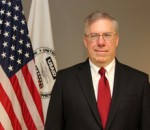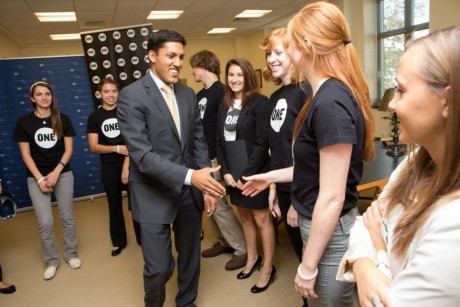Guest author Kadiatou Coulibaly, Ph.D. is the World Education Director of the Ambassadors’ Girls’ Scholarship Program (AGSP). AGSP was funded by USAID from October 2004 through September 2011 as part of the U.S. Africa Education Initiative. World Education, Inc. implemented AGSP in 13 countries in West Africa.
Today, October 11, the world is acknowledging the importance of the girl child. Girls are traditionally the last to receive an education, the last to be fed at the table, and on the whole seen as less valuable than boys. Over the past few years, while managing the USAID-funded Ambassador’s Girls’ Scholarship Program, however, I have seen a dramatic shift in attitudes.
In my view there is no development program more important or sustainable for the long-term than education – and as girls are the ones whose education has been long neglected, that is the most effective place to put education dollars. Whole communities are transformed. The international community has come to recognize this, although there are still many barriers to girls’ education, and in fact to gender equality throughout the world.

Mothers and community members participate in AGSP exercises in Benin. Photo: WEI
It may appear to the outside, to the donor countries, that traditional views among communities and parents are one of those barriers. But that debate is over in the 13 countries where we implemented AGSP. Huge strides were made in raising awareness of the importance of girls’ education. Parents were happy when they saw that school changed completely the girls’ outlook on life.
Educated girls have more resources. They have better opportunities, better health, and a better chance at life. They are able to earn more money and care for themselves, their children, their entire families and the environment. Parents have said to me, “If you educate your daughter and she gets a job – she thinks of you. She will always help you.”
And when you educate girls, you empower the whole community beyond the girl. It can be surprising, the depth of the effect on the community – with results even beyond what is intended.
When World Education was implementing AGSP to send disadvantaged girls to school, we worked in partnership with local organizations. At times we needed to help those groups build capacity so they would have the skills to manage aspects of the program. In Timbuktu, for example, we strengthened women’s groups set up under WEI’s previous program to help mothers become more involved in their children’s education. At the time, the women in the community did not participate in anything public. Their circle of influence was very small. We organized these Mother’s Associations, and then helped to build their capacity in skills such as mentoring, administration and financial management.
In Timbuktu, the Mothers’ Association was in charge of procurement of all scholarship needs, such as books, uniforms and supplies. If there was any problem, such as teachers not showing up to teach – a regular occurrence – they knew who to contact and handled it. It was an amazing change in the role of women in those communities. The AGSP program helped nurture the Mothers’ Association. The women in these groups became mentors to the scholarship students. Men came to listen to the women, while in the past, the women would not even have been asked for their opinion. Respect for women trickled upward from the education of girls.
It has been a joy to see the changing attitude of parents and whole communities as they have come to realize the great advantages of sending their girls to school. In every community where we worked, we could see the transformation. Barriers remain, but I am pleased to say that in places where people have seen the benefits, community resistance is no longer one of them.










